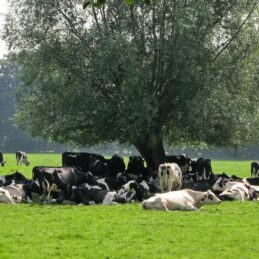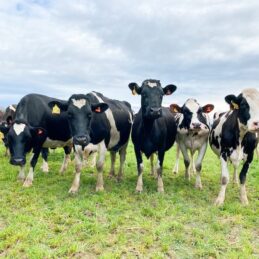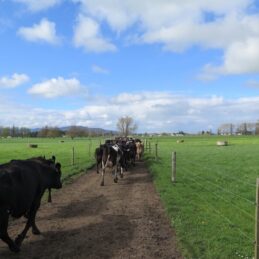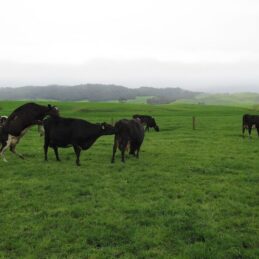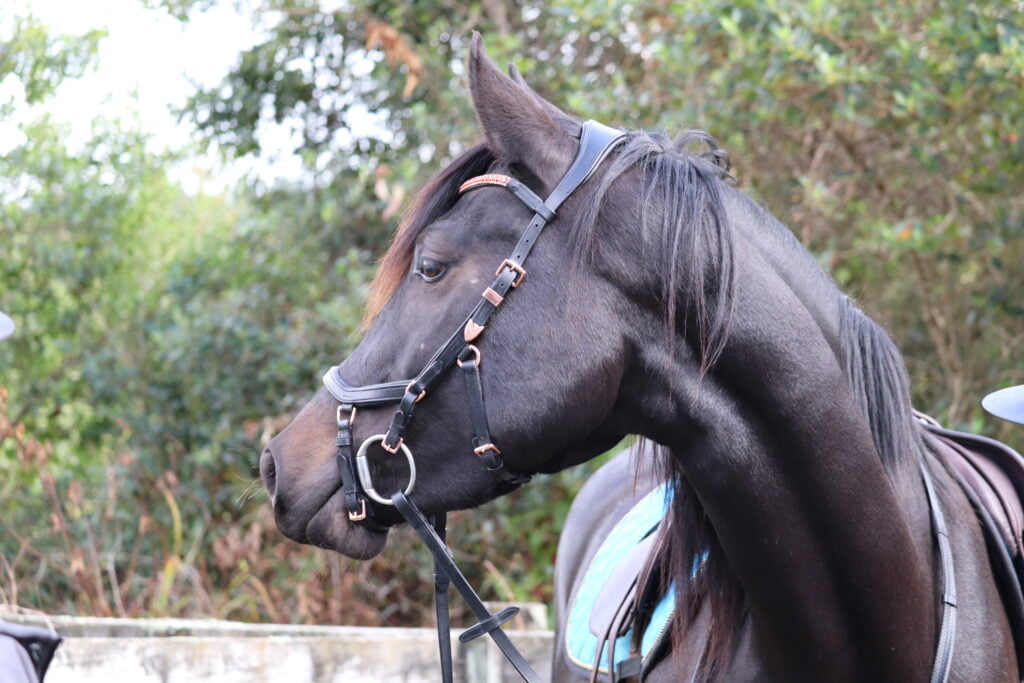
Our modern, domesticated horses live a very different life to the natural state, wild horses of 5,000 years ago. The monogastric herbivores would spend the majority of their day feeding little and often. The fibre in the diet, along with simple sugars, provided an adequate level of energy. Horses of today are likely to spend part of their time housed or with limited access to grazing. Hard feeding as part of their diet, often with a high starch level, can contribute to digestive stress and lead to disrupted digestive function. The horse’s digestive tract can be split into two main sections:
- Stomach and small intestine
- A well-developed hind gut, which harbours a complex and varied microflora
Once feed reaches the hind gut, the slower rate of passage means it can spend up to 72 hours there, in an environment with a rich microflora for microbial fibre digestion. Up to 75% of total energy production from a forage-based diet comes from microbial fermentation1, however the microflora balance can be affected by many factors including diet make up, meal size, transportation and treatment with wormers and / or antibiotics.
When we see issues with microflora imbalance, quite quickly it can lead to a decrease in fibre digestion and your horse extracting less energy from feed consumed. In more severe cases, observations of laminitis, acidosis and diarrhoea occur.
There are a numbers of ways to combat this microbial disturbance, one of which is supplementing the diet with probiotics, for example, live yeast. It is important to ensure that a live yeast is used which has been specially selected for a specific purpose.
Lallemand Animal Nutrition is a global leader in microbial fermentation producing yeast and bacteria. Their scientists use DNA fingerprinting technology to identify specific yeast strains (see Figure 1). Saccharomyces cerevisiae I-1077 has been selected in partnership with INRA and has the backing of over 60 published studies.
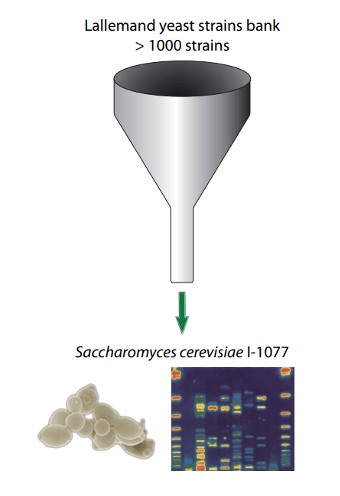
S. cerevisiae I-1077 is the yeast strain used in the product EquiYeast®. It has been chosen for its particular ability to:
- Stabilise pH by reducing lactate production and increasing lactate utilisation by endogenous microflora, both in vitro and in vivo
- Increase fibre degradation from various raw materials by promoting fibre degrading microflora
- Enhance microflora establishment in the young
Once particular trial2 showed that, when supplemented with S. cerevisiae I-1077, the digestibility of dry matter, and fibre components (NDF and ADF) were significantly increased versus control.
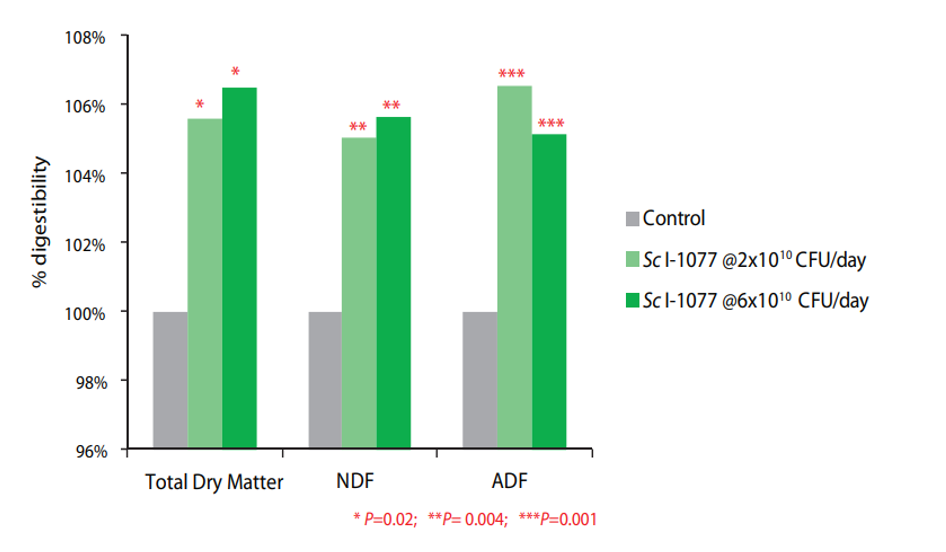
It is suggested that the biological activity of this specific yeast and interactions with endogenous microflora in the digestive tract lead to beneficial changes in the dynamics of the digestive bacterial population. Three main modes of action have been proposed:
- Metabolites such as amino acids and B-vitamins produced by the yeast population may stimulate the growth of endogenous microflora3
- Live S. cerevisiae I-1077 creates optimal anaerobic conditions for endogenous flora by scavenging residual oxygen in the digestive tract (fibrolytic bacteria are particularly sensitive to the presence of oxygen)
- By competing for sugars and other nutrients with undesired bacteria, S. cerevisiae I-1077 control their growth
Research by Chaucheyras-Durand4 indicated that S.cerevisiae I-1077 stimulates fibre associated microbiota i.e. enhanced colonization of lucerne particles by Butyrivibrio fibrisolvens and Ruminococcus flavefaciens.
As with any prebiotic, it is important to ensure that it can reach the site of action intact, in this case, the hindgut, where it can interact with the microflora. Studies by confirm that S.cerevisiae I-1077 survives the passage through the equine digestive tract and is found alive in the faeces.
Given the environment our modern horses live in, considering the addition of Nutritech’s EquiYeast® to the diet is a great choice. By helping maintain a correct pH, assisting in the improvement of digestibility of fibre and competing for nutrients with undesirable bacteria, EquiYeast® can counteract the effects of day-to-day training and feeding practices.
Another product, Selamin® X is an all-rounder, combining the Levucell® SC from EquiYeast® as well as minerals, vitamins and amino acids. Nutritional deficiencies are often referred to as the “hidden handicapper” in equine diets, whether in breeding or performance. SelaMin® X provides a high level of supplement for horses at every stage to help prevent these nutritional deficiencies. Additionally, it contains Melofeed® a naturally occurring powerful primary antioxidant that reduces the damage caused by superoxide, the most common free radical occurring in the body (see NutriNews® 10 for more details on this topic).
To learn more about Selamin® X and EquiYeast® or to discuss any other aspect of equine nutrition, contact your local Nutritech Area Manager.
- Mackie R. I. and Wilkins C. A. Enumeration of anaerobic bacterial microflora of the equine gastrointestinal tract. Appl Environ Microbiol. 1988 September; 54(9): 2155–2160
- Usha, B.V. and T.B. Gorovaya (2007). Studies on the Efficacy of Levucell SC as a Feed Additive for Leisure Horses. In: Lallemand Internal report, Moscow State University of Applied Biotechnology, Moscow
- Chaucheyras-Durand, F., Fonty, G., Bertin, G., Salmon, J.P., and Gouet, P. (1996). Effect of a strain of Saccharomyces cerevisiae (LEVUCELL SC CNCM I-1077), a microbial additive for ruminants, on lactate metabolism in vitro. Can.J.Microbiol. 42, 927-933
- Chaucheyras-Durand, F., Ameilbonne, A., Mosoni, P. and Forano, E. (2010). Effect of a live yeast, Saccharomyces cerevisiae I-1077, used as a feed additive for ruminants, on in situ ruminal digestibility of alfalfa hay and fiber associated microorganisms. Proc. Soc. Nutr. Physiol. 19


